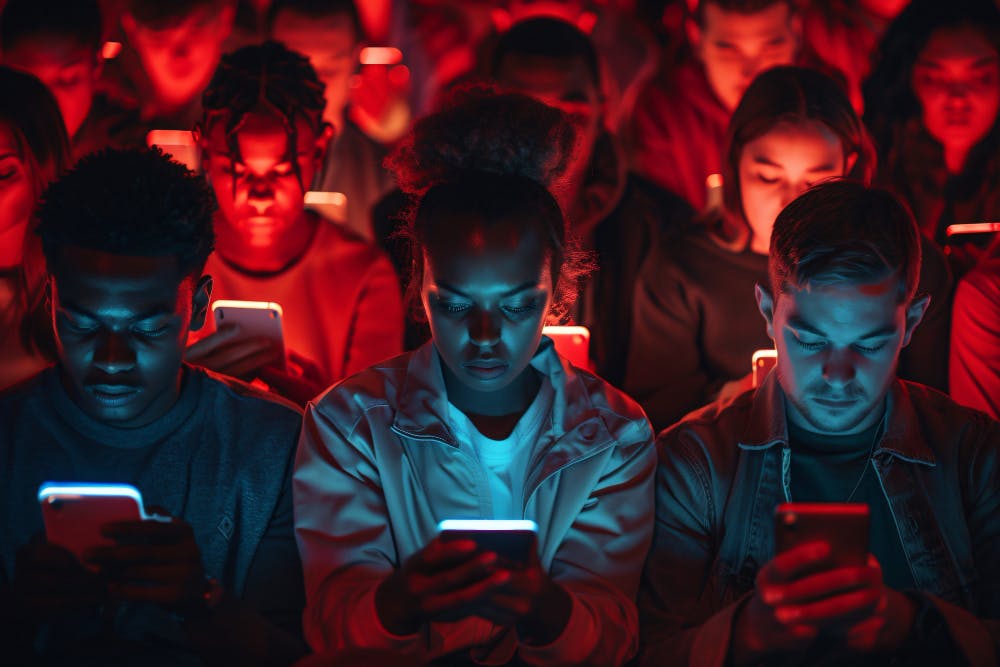Screen addiction is a full blown epidemic.
Teenagers are stuck to screens for hours and the numbers are scary: a 2024
Technology addiction is also linked to serious mental health risks – teens with high device addiction have much higher rates of depression and suicidal thoughts. The irony is brutal: devices meant to connect us end up isolating us. So parents and educators are calling for digital detox and mindfulness around screen use. And technologists are asking can AI solve the AI and screen addiction problem?
In other words can the AI that drives addictive apps be used to break the habit? Modern researchers are directly addressing the issue of AI and screen addiction. Some companies are testing AI-driven “
AI’s Role in Tackling Screen Addiction
AI is already transforming mental health and that spills over into screen habits. Today’s AI tools—chatbots, natural-language agents, and machine-learning models—can screen for anxiety, deliver cognitive-behavioral interventions and monitor progress. AI-driven mental health apps can talk to users 24/7, providing coping strategies when therapists aren’t available.
In fact these AI-powered tools often reduce wait times and increase user engagement compared to traditional therapy alone. By using AI in mental health, innovators are starting to apply these capabilities to digital addiction. For example some apps use AI to detect when you’re endlessly scrolling and then block or dim certain apps or even launch a calming chatbot prompt. Others use AI to analyze usage data and deliver personalized reports, so you can see your patterns.
A recent review notes that AI systems now support many aspects of mental health care (screening, therapy support and monitoring). By repurposing these capabilities AI solutions can now coach you to use technology more mindfully, encourage a “
These tools use machine learning to adapt over time. In short AI and screen addiction are being tackled head on by a new generation of digital therapists and accountability partners. While AI alone isn’t a magic cure it offers scalable on-demand support that can reinforce good habits. Users are turning to these tools to help them stay focused, manage notifications and create healthy screen time schedules
AI Tools to Reduce Screen Time
Several AI-powered apps and platforms have emerged to help users curb digital addiction. Here are a few:
- Forest App
- ChainAI
- RescueTime
Each of these use algorithms or gamification (or both) to get you to put down your phone and be present.
Blockchain and Digital Health: Secure Data and Incentives
While AI gives you personalized coaching, blockchain offers something different: secure, decentralized health data and new incentives for healthy behavior. In blockchain and digital health, it’s all about trust and reward. Blockchains are immutable ledgers, meaning the data stored on them cannot be altered. In practice this could mean patients control their own health records or providers can share data securely. For example, one project called Health Blocks (built on the IoTeX blockchain) connects fitness and lifestyle data to a user’s decentralized health profile.
That platform even rewards users with cryptocurrency when they hit exercise goals (like walking 10,000 steps). By analogy, a blockchain and digital health system could reward people for reducing screen time or completing a mindfulness exercise with digital tokens. Experts are stoked about this. One review of “Web3” in
In fact, researchers are already testing blockchains for health applications worldwide – from improving HIV treatment tracking to incentivizing wellness activities and securing electronic medical records. As one source explains, blockchain can promote healthy behaviors by “tracking health data via wearable devices” and keeping records secure. In the context of screen addiction, blockchain could enable new digital-health business models.
For example, a mental health app could store anonymized user progress on a blockchain, giving users tokens as “proof” of completed unplugged hours. These tokens could be exchanged for rewards, transforming the goal of reducing screen time into a concrete and motivating incentive.
In short, blockchain and digital health technologies could create transparent, gamified ecosystems around well-being, for instance, a community DAO where members vote to fund digital-detox initiatives. By combining cryptography with health data, innovators hope to align personal wellness goals (like reduced phone use) with clear rewards, all while preserving privacy.
Conclusion
The marriage of tech and wellness has opened up new frontiers in the fight against screen addiction. AI tools – whether chatbots for mental wellness or adaptive screen-time managers – offer personalized help for anyone looking to break the screen habit. Blockchain’s promise of secure health data and programmable incentives can underpin a new generation of digital health programs.
In short, the intersection of AI in mental health and blockchain and digital health is creating new solutions. Industry insiders call this the AI and screen addiction synergy: the same algorithms that personalize content are now being turned around to help people take back control. But experts warn technology is no magic bullet. Digital detox still requires personal commitment and any tech solution must be designed with ethics and privacy in mind.
Users should choose reputable tools and remember even well intentioned AI coaches and blockchain tokens need boundaries. At its best this combination of AI and blockchain can turn screen addiction from a solo problem into a shared challenge with support. By using AI in mental health for monitoring and motivation and blockchain and digital health for trust and rewards the tech industry is finally tackling our collective screen addiction crisis. When done right these innovations will help people break free from their screens and get back to the real world.


